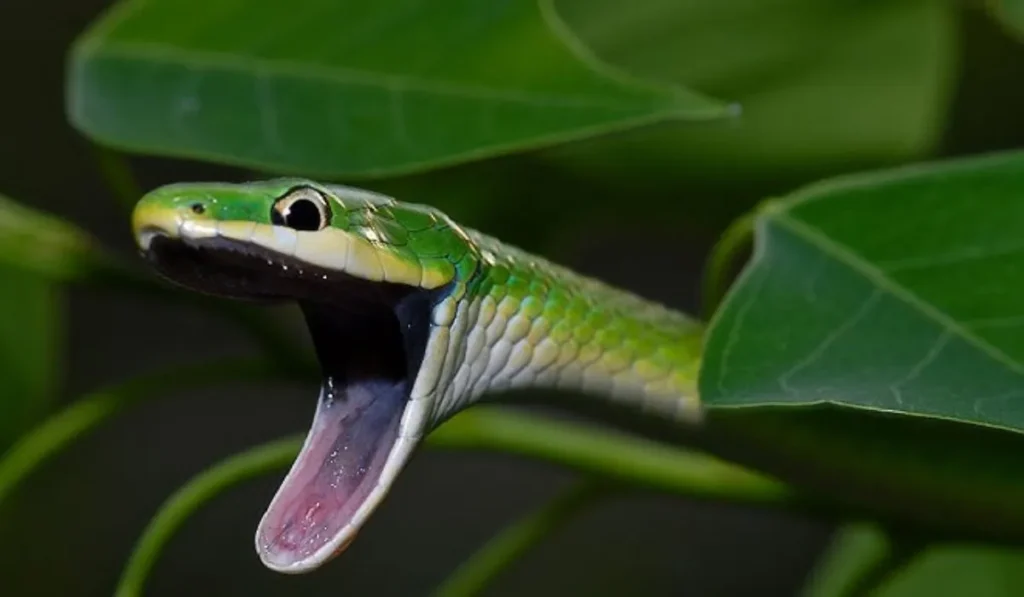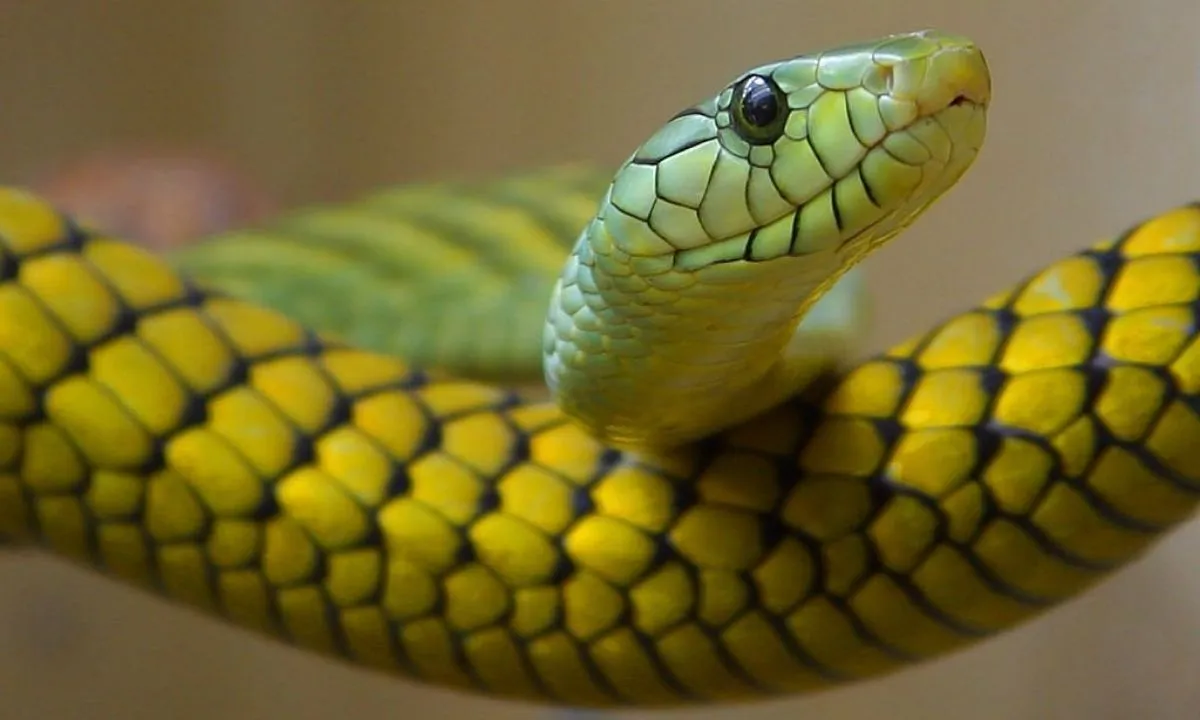Rough Green Snake Guide
The rough green snake is a non-venomous snake compared to other snakes that usually eat small insects. These snakes are quite slender and long and prefer to live near water and mostly live in trees because their green color helps them to hide in the trees. Gives a lot of help in hiding. There is no threat to human life from this snake and it is very calm in nature so people keep it as a pet.
For More Information about Reptiles Click Here

Quick Facts about Rough Green Snake:
- Scientific Name: Opheodrys aestivus
- Common Name: Tree Snake, Green Snake, Summer Tree Snake
- Family: Colubridae
- Age: If these snakes live in the wild, they survive for six to eight years, if we keep them at home or in captivity, they can survive for up to ten years.
Physical Description of Rough Green Snake:
This snake is called a rough green snake because its skin has fine scales, its body is thin and green, which helps it to hide in leaves, and its belly is yellow and white in color. They are dull in color until they shed their first coat.
Geographic Range of Rough Green Snake:
The snake is found mostly in the southeastern region of the United States and is found in northern regions such as Kansas and Missouri. This snake ranges from Texas and east to the Atlantic coast. This snake prefers to live in warm areas such as Florida and Georgia and it prefers to live near water.
Habitat of Rough Green Snake:
The rough green snake is mostly found along the banks of rivers and ponds with forests. Although it is a water snake, it forages during the day in sugarcane plants along the shores of lakes and Ponds. Generally active during the day and prefer to be around water, they are often difficult to spot because they are thin and long and easily blend into trees and branches. These snakes mostly live near water and in trees so that they can hunt and not be seen.
Size of Rough Green Snake:
If we talk about the size of a this green snake, an adult rough green snake is 2 to 3 feet in size and a newborn snake is about 6 to 8 inches in size at birth. Let’s talk over all, it is a slender snake, its body is quite strong and agile, which helps it to move fast, and it is also quite agile, its size makes it an attractive pet.
Diet Of Rough Green Snake:
The rough green snake primarily eats insects such as caterpillars, grasshoppers, grasshoppers, and crickets, although they also eat small frogs, spiders, and snails. Even the slightest movement of an antenna attracts the attention of a snake. They use their special vision to hunt or find live prey or to track the prey by which they can easily locate the prey. In the early stages of hunting, it is very agile and agile, but whenever it approaches its prey, it slows down and becomes completely sluggish.
When rough green snakes are within range of their prey, i.e. 3 centimeters away, they adopt a spring-like contortion with their body, after which their body straightens. The snake moves its head towards the victim either to strike on the head or on the breast.
Reproduction and Life Cycle Guide:
Male rough green snakes use a variety of motor patterns when mating with females, including slight rubbing, tail wagging, and head shaking. Females lay two to 12 eggs in June or July, usually in moist places such as tree hollows or under rocks. Hatching snakes are up to eight inches long and have been known to live up to eight years in captivity. The babies that hatch in early fall look like miniature adults but their color is less vividly green.
Development and Care of Rough Green Snake:
Compared to other snakes, these green snakes take good care of their eggs like other snakes don’t take care of eggs but these snakes take good care of their eggs and they don’t let the eggs stay outside because they are afraid. It happens that their eggs are not preyed upon, so they only keep their eggs out for a short time. Their eggs are about 33.6 mm in length and about 9.3 to 11.1 mm wide and the eggs weigh about 1.2 to 2.4 grams. Female snakes grow faster in the first year than males and increase in size more quickly than male snakes.
Lifespan of Rough Green Snake:
Green snakes do not survive long and their adults do not live long because the main reason behind this is that certain climatic conditions also cause their death such as extreme cold. And due to extreme heat, these snakes do not live long and most of the snakes become victims of one or the other. These snakes live an average of 5 years and a maximum of 8 years.
Behavior of Rough Green Snake:
The behavior of this green snake is to live in leaves and near water but it still crawls on the ground to find its prey and eat small insects. These snakes like to stay warm during the months of January to February and spend the colder months in hibernation. If they go out to hunt in cold weather, their breathing and heart rate slow down, so they rarely hunt in cold weather.

Predators:
Rough green snakes are the prey of large snakes, domestic cats and large insects, so they hide in the green bushes to protect themselves from the prey.
Conservation Status:
Green snakes are less protected. Urban development, and lack of trees near rivers and drains is the main reasons for their decline. Most snakes are killed on roads and some snakes are exposed to insecticides. When this snake dies, its color turns blue.
Health Problems of Rough Green Snake:
Most of their health problems occur in winter. They don’t like to move much in winter because their heart rate and speed slow down.
Did You Know?
- Although these snakes live on trees, they also know how to swim very well.
- These snakes are gentle and do not bite.
Conclusion:
This article explains why rough green snakes are called green snakes, what size they are, what habitats they like to live in, what they like to live in, what they hunt, and what they do. Who are the prey and how do they protect their eggs and what is their behavior? And what health problems do they cause?.







